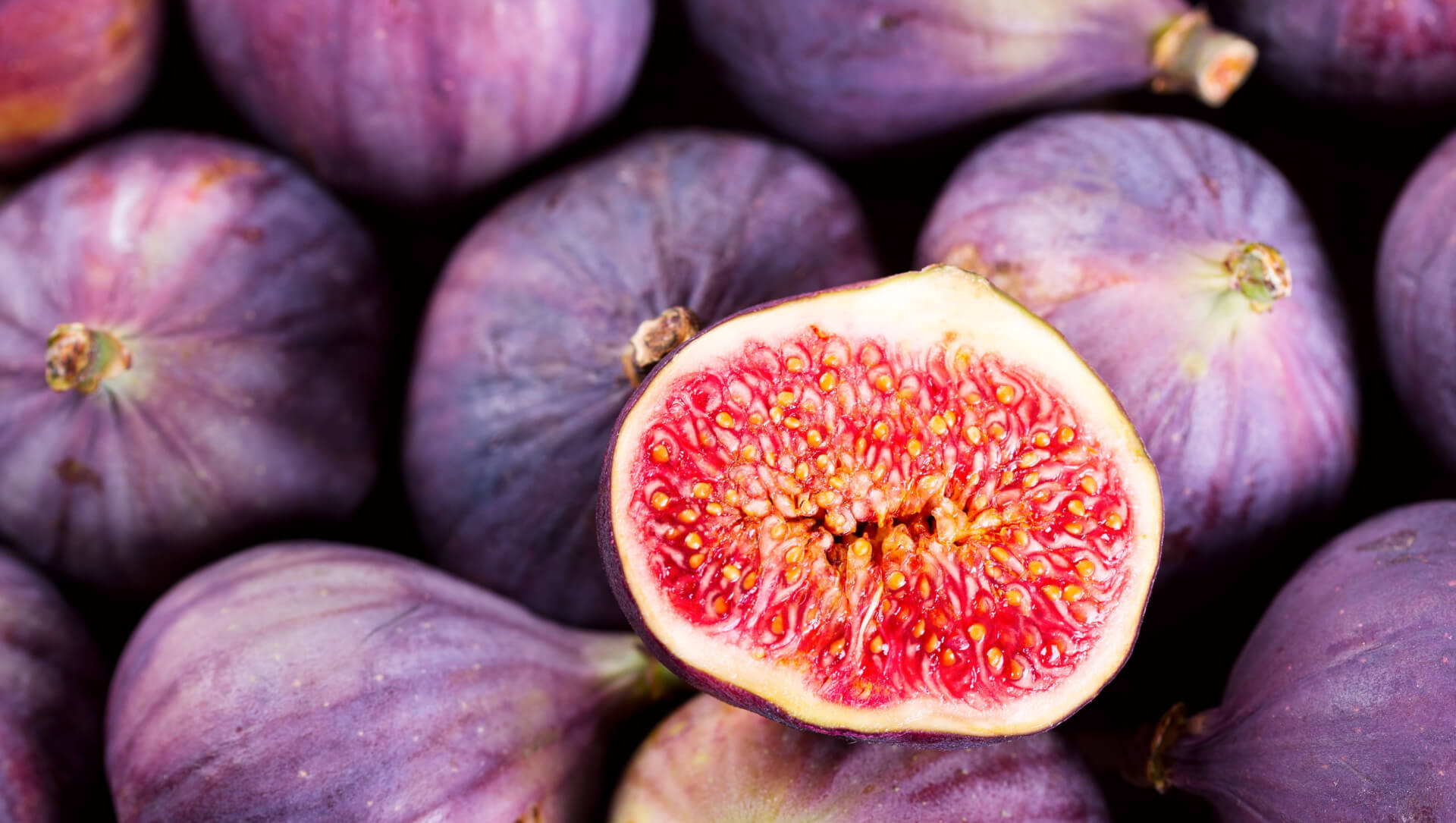
Originating in the Mediterranean region, figs were brought over by Spanish and Portuguese missionaries to the New World around 1520, eventually reaching California in the 1700s. Figs are primarily grown during the summer months, starting in June through September, however, dried figs are available all year round. In the United States, figs are primarily grown in California.
While figs may be one of the prettiest fruits out there, they are also an excellent source of nutrients, including fiber, potassium, and B vitamins.
- Dietary fiber is an essential part of a balanced diet while helping to support regular digestion and a healthy immune system.
- The potassium found in fruits and vegetables, including figs, is an essential part of heart health as it helps to regulate blood pressure.
- Interestingly, figs are not the only beneficial component of the Ficus plant, as their leaves also contain healing properties. The antidiabetic properties of fig leaf extracts are also being studied for their ability to increase insulin sensitivity, meaning that diabetic patients may not require as much of their insulin injections.
It’s important to enjoy figs in moderation because their oxalate content and high fiber can promote laxative effects.
Here are some of the more common figs you’ll see in stores:
- Black Mission Figs are one of the most common figs. They have black-purple like skin, dark pink flesh, and are very sweet. These figs are delectable when consumed raw or with dairy products such as cheese or yogurt. You can usually find this type of fig sold dried in a supermarket.
- Adriatic Figs can be a pale green or pale yellow with a bright pinkish-red inside. These figs are also extremely sweet and can be enjoyed on their own.
- Brown Turkey Figs have brownish-purple skin with pale green colors (sometimes). Even though they look alike, they should not be confused with the black mission figs. These figs have a milder flavor making them ideal to add to salads or desserts.
- Calimyrna Figs have golden pale green skin and pink flesh. These figs have a certain nuttiness flavor making them served best when freshly cut up or simply dried.
Chef Tips
When selecting fresh figs, look for plump, tender, and deep colored figs that are not mushy or bruised. They should emit a mildly sweet fragrance as well.
Figs are highly perishable and should be purchased about a day or two prior to consumption and then refrigerated. Fresh figs can be stored in a freezer for about 3-6 months. Dried figs can last about 6-12 months in a pantry or refrigerator as long as they are kept in a cool and dry place.
Fresh figs can be eaten raw or alone, combined with other foods or even made into jams. Add it to simple oatmeals and yogurt, in this Crostini with Fig & Walnut Tapenade, or this Fig & Goat Cheese Pizza.














Reviews & Comments
No reviews yet.
Leave a Review or Comment